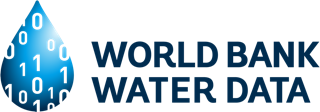The National Family Health Surveys (NFHS) programme, initiated in the early 1990s, has emerged as a nationally important source of data on population, health, and nutrition for India and its states. The 2005-06 National Family Health Survey (NFHS-3), the third in the series of these national surveys, was preceded by NFHS-1 in 1992-93 and NFHS-2 in 1998-99. Like NFHS-1 and NFHS-2, NFHS-3 was designed to provide estimates of important indicators on family welfare, maternal and child health, and nutrition. In addition, NFHS-3 provides information on several new and emerging issues, including family life education, safe injections, perinatal mortality, adolescent reproductive health, high-risk sexual behaviour, tuberculosis, and malaria. Further, unlike the earlier surveys in which only ever-married women age 15-49 were eligible for individual interviews, NFHS-3 interviewed all women age 15-49 and all men age 15-54. Information on nutritional status, including the prevalence of anaemia, is provided in NFHS3 for women age 15-49, men age 15-54, and young children. A special feature of NFHS-3 is the inclusion of testing of the adult population for HIV. NFHS-3 is the first nationwide community-based survey in India to provide an estimate of HIV prevalence in the general population. Specifically, NFHS-3 provides estimates of HIV prevalence among women age 15-49 and men age 15-54 for all of India, and separately for Uttar Pradesh and for Andhra Pradesh, Karnataka, Maharashtra, Manipur, and Tamil Nadu, five out of the six states classified by the National AIDS Control Organization (NACO) as high HIV prevalence states. No estimate of HIV prevalence is being provided for Nagaland, the sixth high HIV prevalence state, due to strong local opposition to the collection of blood samples. NFHS-3 covered all 29 states in India, which comprise more than 99 percent of India's population. NFHS-3 is designed to provide estimates of key indicators for India as a whole and, with the exception of HIV prevalence, for all 29 states by urban-rural residence. Additionally, NFHS-3 provides estimates for the slum and non-slum populations of eight cities, namely Chennai, Delhi, Hyderabad, Indore, Kolkata, Meerut, Mumbai, and Nagpur. NFHS-3 was conducted under the stewardship of the Ministry of Health and Family Welfare (MOHFW), Government of India, and is the result of the collaborative efforts of a large number of organizations. The International Institute for Population Sciences (IIPS), Mumbai, was designated by MOHFW as the nodal agency for the project. Funding for NFHS-3 was provided by the United States Agency for International Development (USAID), DFID, the Bill and Melinda Gates Foundation, UNICEF, UNFPA, and MOHFW. Macro International, USA, provided technical assistance at all stages of the NFHS-3 project. NACO and the National AIDS Research Institute (NARI) provided technical assistance for the HIV component of NFHS-3. Eighteen Research Organizations, including six Population Research Centres, shouldered the responsibility of conducting the survey in the different states of India and producing electronic data files. The survey used a uniform sample design, questionnaires (translated into 18 Indian languages), field procedures, and procedures for biomarker measurements throughout the country to facilitate comparability across the states and to ensure the highest possible data quality. The contents of the questionnaires were decided through an extensive collaborative process in early 2005. Based on provisional data, two national-level fact sheets and 29 state fact sheets that provide estimates of more than 50 key indicators of population, health, family welfare, and nutrition have already been released. The basic objective of releasing fact sheets within a very short period after the completion of data collection was to provide immediate feedback to planners and programme managers on key process indicators.


